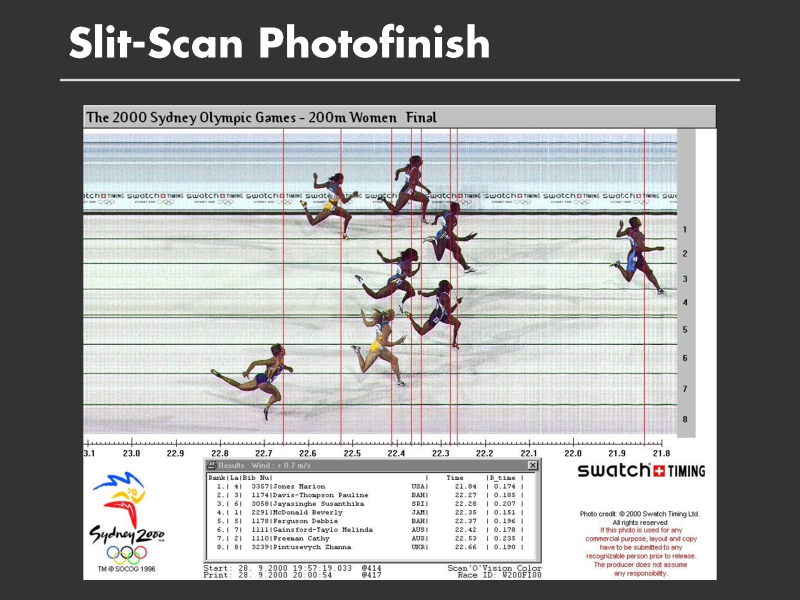
Let me show one last clever photographic process. I am sure you have all heard of the photo-finish. Here is a slit-scan photograph from the women?s 200m final in the 2000 Sydney Olympics.
A slit-scan camera forms a picture from a one-dimensional vertical sensor. This vertical scanline of pixels is read-back at different times. Placing all the scanlines side-by-side allows us to create a picture of the finish line vs. time. Each x position corresponds to a different time. Examining the photograph, we can read off the precise time that each runner crosses the finish line, determining the order of finish unequivocally.
One reason I wanted to conclude with this picture was to emphasize that many great visualization techniques arise from photography. There are many books on scientific and technical photography, and there are many applications from astronomy to microscopy. Furthermore, as we all know, digital imaging is revolutionizing many areas of science and medicine.
It seems surprising to me that digital imaging is not better represented at the visualization conference. A big advance in computer graphics was the introduction of image-based modeling and rendering; could there be an equally big advance in visualization called image-based visualization?